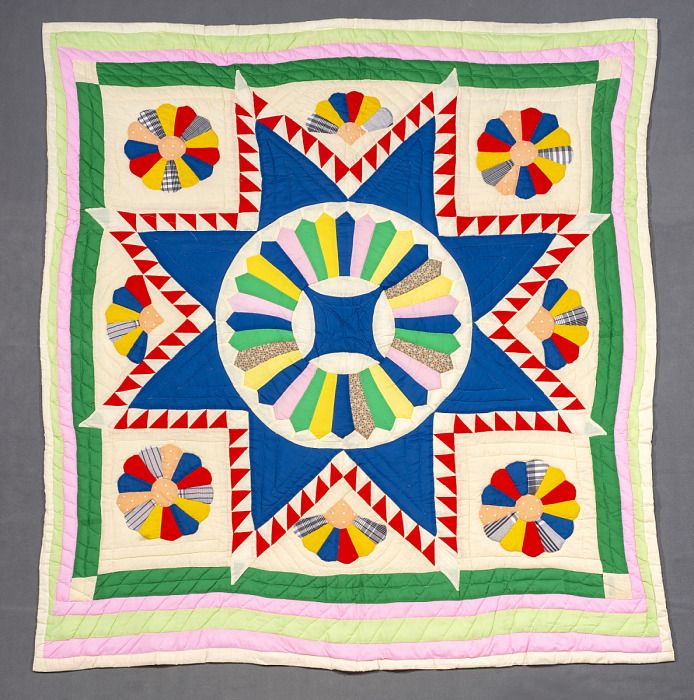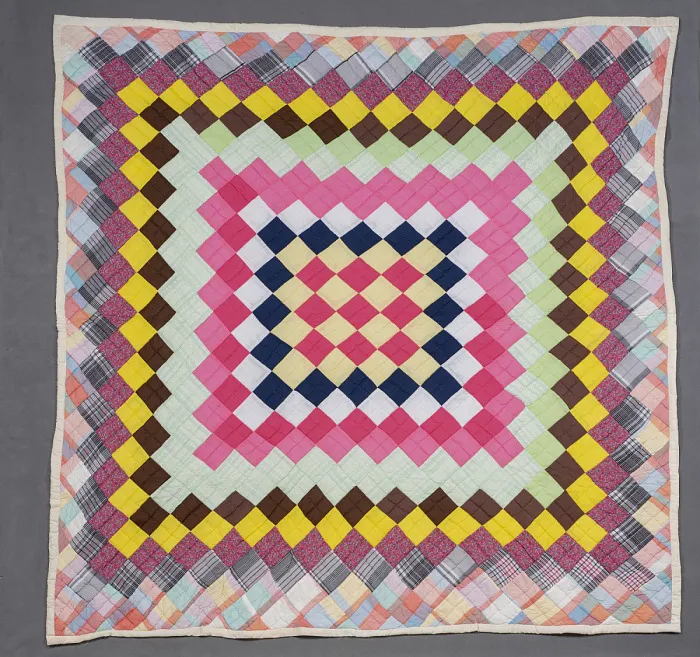OFFICE OF ACADEMIC APPOINTMENTS AND INTERNSHIPS
These Quilts Are Richly Stitched with the Stories of the Women Who Made Them
When we think about art, what first comes to mind? Who is an artist? These questions guided my research as I gathered resources for a lesson exploring several quilts in the collection at the Anacostia Community Museum. Along the way, I uncovered some of the stories associated with the colorful designs, adding a layer of complexity to these pieces of art. What follows is just one example of the many ways we can explore how memory helps us engage with objects in museum collections.

When we think about art, what first comes to mind? Who is an artist?
These questions guided my research as I gathered resources for a lesson exploring several quilts in the collection at the Anacostia Community Museum. Along the way, I uncovered some of the stories associated with the colorful designs, adding a layer of complexity to these pieces of art. What follows is just one example of the many ways we can explore how memory helps us engage with objects in museum collections.
Emma Russell (1908-2004) was a quilter and a tradition bearer who is well represented in the Smithsonian’s collections. Her legacy at the Smithsonian Institution began with the work of photodocumentarian Roland Freeman and the Mississippi Folklife Project at the Smithsonian Center for Folklife and Cultural Heritage. Freeman’s research was collected and published in the book “A Communion of the Spirits” amid a growing interest in African American quilting practices. Coming full circle, Freeman’s work for the Folklife Festival inspired an art collector to commission Mrs. Russell to create the quilts that are now in the Anacostia Community Museum’s collection.
Termed “fancy,” for their decorative purpose and non-utilitarian use, her quilts present classical patterns and techniques of quiltmaking. Beyond their aesthetic beauty, the quilts also tell an important story about intergenerational teaching and learning. Mrs. Russell learned the traditional craft of quiltmaking from her mother, Phoeba Johnson, in their Mississippi home. According to family oral history, the tradition dates back five generations, passed down from mothers to daughters, and harkening back to Phoeba Mae, an enslaved woman who was a plantation seamstress in Maryland. Quilting can be a way for practitioners to connect to their past, at the juncture between material culture and intangible heritage.

Alongside Mrs. Russell’s quilts in the collection are documented correspondence between Russell and a collector, as they exchanged letters to confirm the delivery of each quilt. This small detail speaks volumes about the care that Russell took in her business, “relieved as always when I know something I mail is safe.” The letters also document the daily practice of her craft, including the cost of materials, how she worked at home and her efforts to introduce a friend to the “quiltmaking business,” helping us understand more about the environment in which the quilts were created.
In the words of bell hooks, quilts are “aesthetic inheritances,” serving as a visual reminder of a longstanding creative culture and challenging the notion that black women artists are rare exceptions. However, quilts are “not just art,” but objects with multiple uses and functions: at the most basic level, they are something to keep you warm. This use adds to the memories and the meanings tied to them, creating connections between people. By reframing the domestic sphere as a legitimate place of resistance and creation, hooks recognizes the subversive value of quilts as a thing of beauty.
Quilts in museum collections can further complicate the boundaries between everyday objects and art, as both masterpieces to be exhibited and artifacts of daily life. Seeing something so familiar in a different context can encourage people to rethink concepts that were previously taken for granted: what is art, and where can it be found? How do we classify or catalog history? Whose stories are being told in museums? These big questions can seem daunting at first, but by looking, thinking and talking, institutions and the communities whose stories we preserve can understand more deeply the ideas that shape our national collection.
To discover more about quilts, check out the online lesson created as part of this research project. You can also explore millions of digitized resources from the Smithsonian's collection on Learning Lab, create your own questions and uncover new stories!

